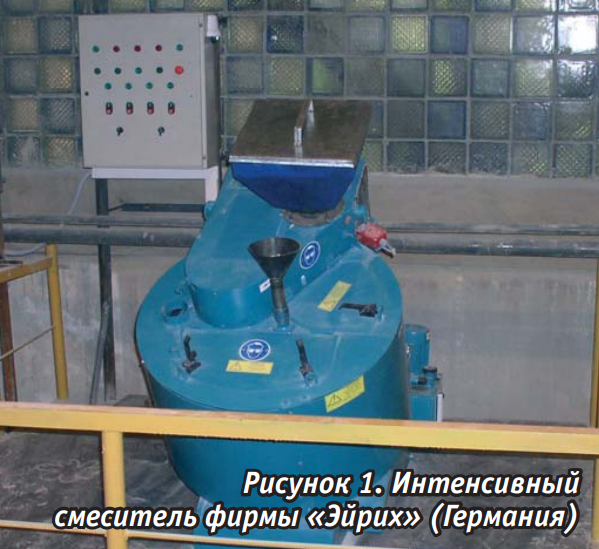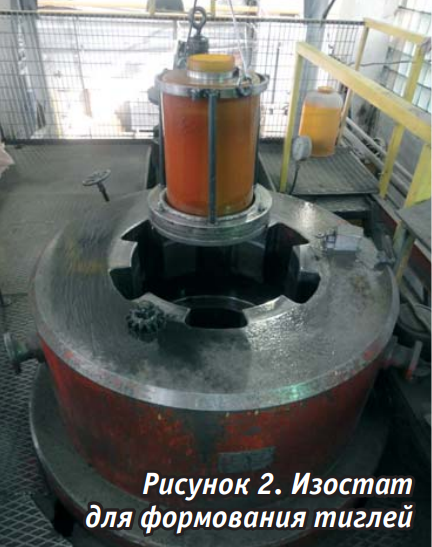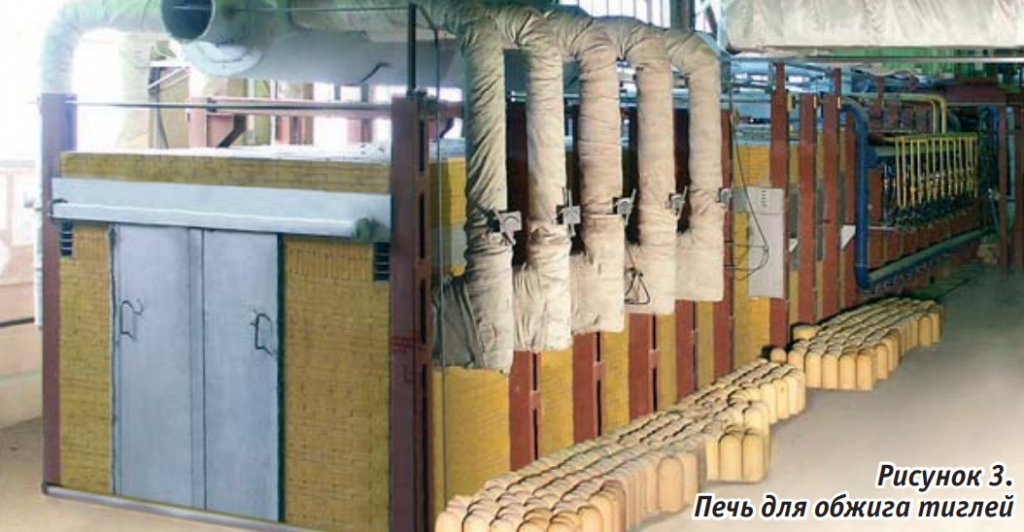 |  |
 |
| Eirich Intensive Mixer (Germany) | Isostat for crucible moulding | Furnace for firing crucibles |
Since the end of the 90s, Bakor STC has been routinely producing a wide range of crucibles made of such ceramic materials as magnesium oxide, aluminium oxide, corundum-mullite-zircon and corundum-mullite.
The positive experience of effective interaction between VIAM, the head institute of the aviation industry, and the research and production company has given grounds for further cooperation between STC and VIAM in the development and application at aircraft engine-building enterprises of a number of particularly complex products, as well as for mastering the technology in engine building and in the production of heat-resistant alloys.
During high-temperature gas-static treatment (HSTT) of working blades made of heat-resistant alloys at temperatures of 1310-1330°C, working gas pressure of argon up to 2000 atmospheres and prolonged exposure time up to 8 hours, special ceramic products are used, including crucibles (diameter up to 360 mm, height up to 300 mm), as well as substrates and plates. The durability of standard ceramic products did not exceed 3-4 cycles of HSTT. After the first HSTT cycle, small cracks appeared on the crucibles, which turned into large cracks during the following HSTT cycles. The crucibles lost their original dimensions and were destroyed. The products made in Bakor STC CJSC from special ceramics of new generation after 10 cycles of HSTT had no cracks, retained their original dimensions and were ready for further use.
At present, Russia's leading special metallurgy enterprises are undergoing a comprehensive re-equipment with the introduction of modern Western technologies for the production of heat-resistant alloys. New technologies for production of heat-resistant alloys make it possible to significantly improve technical characteristics of gas turbine engines, including resource characteristics. These technologies began to be developed in Western Europe and North America in the 90s of the last century. Due to known circumstances, these technologies were not developed in Russia.
However, recently Russian special metallurgy enterprises related to the production of heat-resistant alloys have started to be actively re-equipped and equipped with the equipment necessary for the implementation of new technologies. Thus, Stupinsky Metallurgical Plant has purchased and mastered a 2.5 tonne crucible unit from Consarc (USA) and is purchasing a 7 tonne unit by ALD (Germany); All-Russian Institute of Light Alloys has purchased a 4 tonne crucible unit from ALD; Elektrostal Metallurgical Plant is mastering a 2.5 tonne crucible unit (Consarc). Such furnaces should be equipped with consumable components made of special ceramics supplied from the USA, England and Germany (metal-conducting systems, tandishes, larger crucibles).
Currently, in order to reduce the dependence of domestic enterprises of the defence-industrial complex of the Russian Federation on supplies of foreign components, the production of a number of such products from special ceramics has been mastered in Bakor STC CJSC (Figures 6-7).
To master these products’ manufacturing, an innovative technology of moulding by vibro-casting of highly concentrated suspensions with the addition of nanodisperse binder, which does not contain calcium oxide, was created and introduced.
It should be noted that foreign suppliers of special ceramics products try to promote to the Russian market the products that were used at the early stages of development of new technology of heat-resistant alloys smelting. The companies of NATO and EU countries supply products from modern special ceramics of the new generation. For example, crucibles with a maximum operating temperature of 1700°C are offered for sale in Russia, while metallurgical plants in England and the USA use crucibles in which the melt can be heated to at least 1800°C.
At the end of 2012, work on the creation of new-generation special ceramics products was started by VIAM, the A.A. Baikov Institute of Metallurgy and Materials Science of the Russian Academy of Sciences, the Moscow State Industrial University and the Bakor Research and Development Centre. There is a lot of difficult but interesting work ahead to develop and master innovative technologies and products that provide a sharp increase in the performance characteristics of heat-resistant alloys and products made of them.